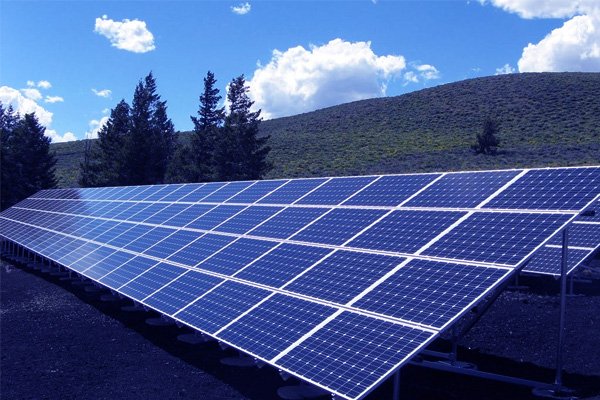
Solar Energy
Solar Power was once considered, like nuclear power, ‘too cheap to meter’ but this proved illusory because of the high cost of photo voltaic cells and due to limited demand. Experts however believe that with mass production and improvement in technology, the unit price would drop and this would make it attractive for the consumers in relation to thermal or hydel power. The Solar Photo Voltaic (SPV) technology which enables the direct conversion of sun light into electricity can be used to run pumps, lights, refrigerators, TV sets, etc., and it has several distinct advantages, since it does not have moving parts, produces no noise or pollution, requires very little maintenance and can be installed anywhere. These advantages make them an ideal power source for use especially in remote and isolated areas which are not served by conventional electricity making use of ample sunshine available in India, for nearly 300 days in a year.
A Solar Thermal Device, on the other hand captures and transfers the heat energy available in solar radiation. The energy generated can be used for thermal applications in different temperature ranges. The heat can be used directly or further converted into mechanical or electrical energy.
- Solar Water Heating System
Several designs and capacities of Solar Water Heating System (SWHS) are available to suit the users' needs. The Government of Tamilnadu provided a subsidy of Rs.2000/- to Rs.3000/- for domestic Water Heating System from 1993 to 1998. The Government also sanctioned the full cost of SWHS in 12 Government buildings, mostly hostels and hospitals, in addition to which during the Ninth Plan, 1370 domestic and 58 Industrial Water Heaters were installed in Tamil Nadu.
- Solar Air Heating Systems
Tamilnadu has taken a lead role in the country to promote the use of Solar Air Heating technology for Tea/ Fruit processing and Grain drying. 14 systems were installed in Tamil Nadu with MNES subsidy. This process of pre-heating using solar energy saves nearly 25% of fossil fuels or firewood. The concept of solar air heating was evolved only in Tamilnadu for the first time in the country. The air gets heated when passed through the solar air heating system, which is used for bringing down the moisture content in the materials to be dried. In the process, it provides substantial fuel savings to the Industries. During Ninth Plan, 14 solar air heating Systems were installed in Tamilnadu with the research experience of Planters Energy Network, an associate of the Madurai Kamaraj University.
- Solar Photovoltaic Systems
Solar Photovoltaic pump is a system which produces electricity from sunlight and operates the pump to lift water from wells. A 900 watts pump can deliver about 50,000 litres of water per day over a total head of 30 feet. It can irrigate one to two acres. Under these conditions, the SPV pumps offer a reliable alternative for small farmers. The cost of a 900 watts pump is Rs.2.24 lakhs. IREDA, Government of India and GOTN provide a subsidy of Rs.1,12,500/- at Rs.125/- per watt and Rs.59,000/- per pump respectively and the remaining is the farmer's contribution. During Ninth Plan period, 95 numbers of SPV pumps were installed.
SPV lantern is a portable lighting device which provides light equivalent to a 60 watt bulb for about 4 hours per day. This is very useful in remote areas where there is no electricity or where there is frequent failure of electricity. MNES, Government of India provides subsidy of Rs.1500 per lantern. During the Ninth Plan period, 1000 SPV lanterns were distributed.
SPV Street light is a stand-alone street light system with a 11 W CFL Lamp. It provides lighting for 12 hours. The cost of each light is around Rs.30,000/-. Tamilnadu Government provided a subsidy of Rs.12000/- per light. During the Ninth Plan period 60 SPV Street Lights were installed.